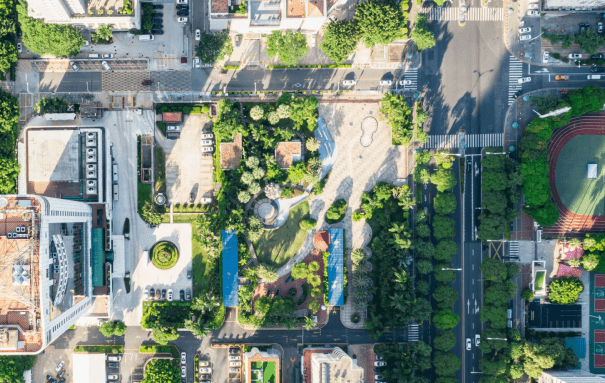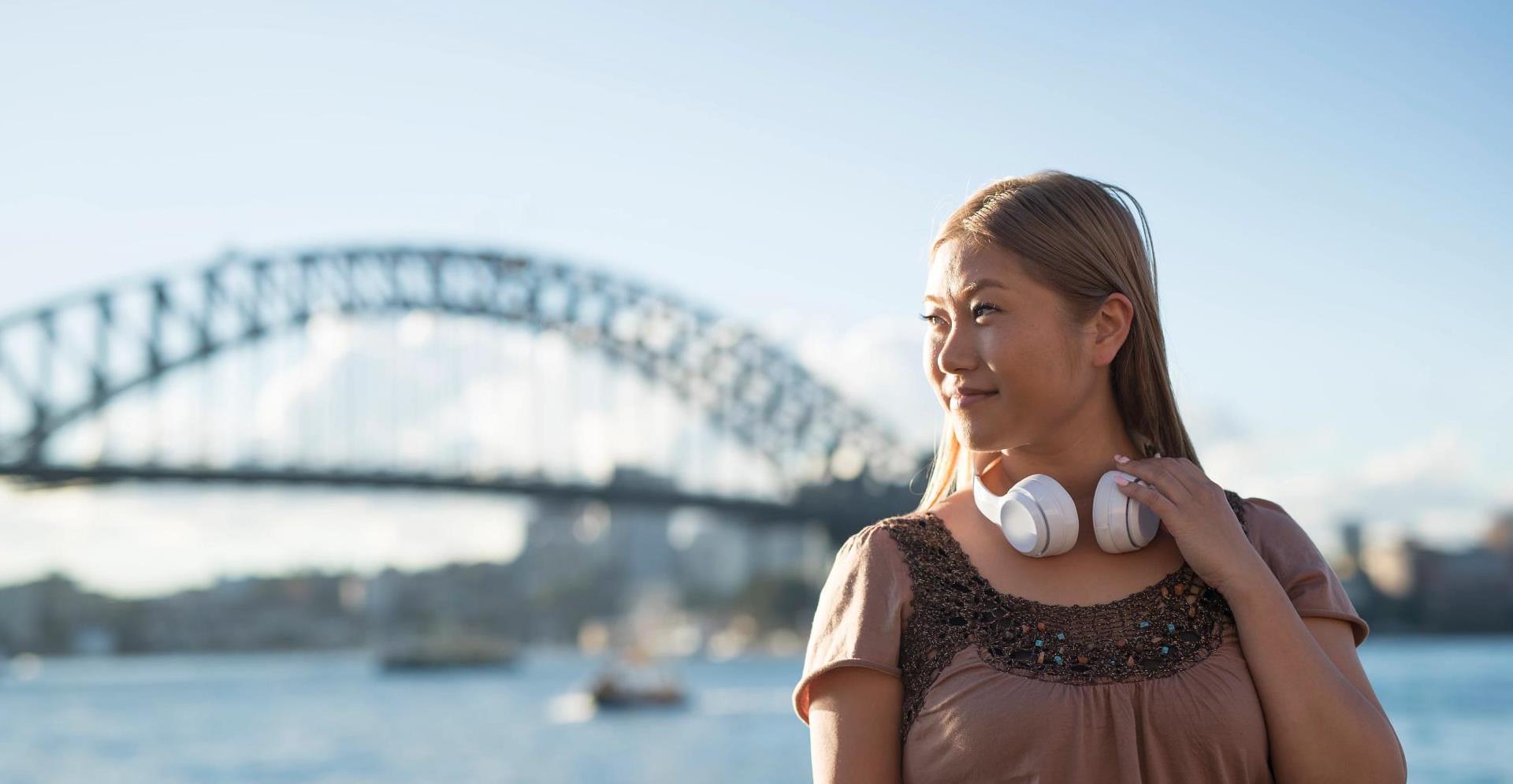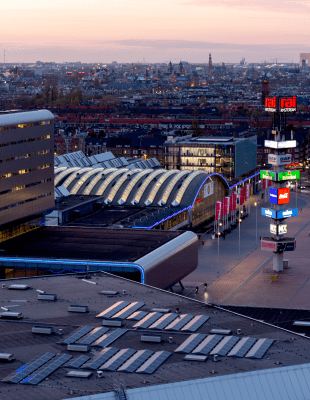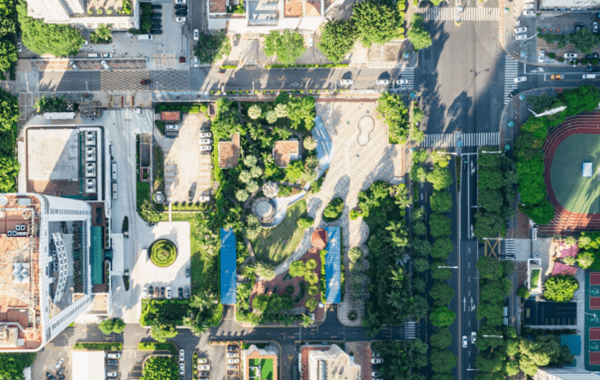People living in Sydney, Australia are having to cope with poor air quality that’s negatively impacting their quality of life. One of the sources of air pollution is the thousands of diesel trucks that transport goods in and out of the city. In this episode of Better Cities by Design, we spoke with Nick Cleary, CEO of CLARA Energy, a company that’s developing green hydrogen fuel, with the goal of replacing those diesel trucks with clean energy vehicles and helping to clean up the air in and around Sydney.
You have not accepted cookies yet
This content blocked. Please accept marketing cookies. You can do this here.
Subscribe on your favourite platform
CEO Nick Cleary talks about his company, CLARA Energy, and their ambitious goal to change the way green energy is used in Australia and help clean up the transportation industry, by rapidly scaling up the production of green hydrogen for fuel. Currently, thousands of heavy-haulage diesel lorries travel between Sydney and Melbourne, transporting goods between Australia’s two biggest cities. And the exhaust from those trucks contributes to rather poor air quality in and around Sydney. Research shows that not only are people in Sydney breathing in air that’s unsafe, this is also causing hundreds of premature deaths each year.
Nick and the folks at CLARA Energy believe hydrogen can play a critical role in addressing this problem. They’re using new and existing technologies to create green hydrogen, with a goal of decarbonizing hard-to-abate industries, such as heavy haulage transport. In our conversation, Nick talks about how he has witnessed the decline in air quality over the past years and his plans make a difference over the coming years. Nick also addresses some of the criticisms about green hydrogen as a fuel source, as well as his hope that Australia is now set to catch up with Europe and the US in terms of accelerating the energy transition.


The Arcadis global podcast
Better Cities by Design
Episode transcript:
We recognize that not everyone is able to listen to our podcast, which is why the show is also available in text. If you would prefer to read what happened in the show instead of listening, please click the link below for the episode transcript.
-
Read full transcript
00:05
Davion Ford
Welcome to Better Cities by Design, a podcast brought to you by Arcadis, where we talk to changemakers who are working to make our cities better places for people to live, work, and play. I'm your host, Davion Ford. This week, we're headed down under to Sydney for a chat with Nick Cleary, the chief executive officer of CLARA Energy, a renewable energy development company focused on decarbonizing hard to abate industries, like getting heavy haulage diesel trucks off the roads and replacing them with vehicles powered by sustainably produced green hydrogen.
00:44
Davion Ford
Situated on the east coast of the continent with more than 5.3 million residents, Sydney is the most populous city in Australia and the capital city of New South Wales. Australia's first nations peoples have lived in and around Sydney for at least 30,000 years. Known for its brilliant blue harbor waters and landmarks like its opera house, Bondi Beach, and Harbor Bridge, Sydney is a highly attractive destination for tourists but also for people looking for a place to live. But unfortunately for all of its appeal over the past decade, Sydney has also gained notoriety for having very poor air quality. These high levels of air pollution have significant negative impacts on city residents. From 2020 to 2022, the Department of Planning and Environment worked in collaboration with the Environment Protection Authority and the Ministry of Health on the Sydney Air Quality Study. And the findings are breathtaking. According to this research, the majority of people living in Sydney are breathing in air that's polluted to a level that the World Health Organization considers unsafe. The study estimates that across New South Wales, air pollution causes around 600 premature deaths and increases health costs by 4.8 billion Australian dollars a year. To learn more, we spoke with Arcadis Infrastructure Advisory Lead, Clara Owen, who lives in the region.
02:10
Clara Owen
The air quality in Sydney can be a significant concern, especially for people with lung disease or asthmatics, and particularly during periods of bushfires when smoke can result in very elevated levels of air pollution. State government has been applying numerous efforts to reduce emissions from vehicles and industry, as well as a number of measures to improve energy efficiency in buildings. But despite this, there are still occasional periods of poor air quality. During these periods, the concentration of fine particulate matter in the air can exceed safety levels, and people are advised to take steps to protect their health, such as staying indoors and using air purifiers.
02:54
Davion Ford
According to that air quality study, the major causes of air pollution in and around Sydney are wood burning heaters, which are used in about 10% of homes in the region, as well as industrial emissions, for instance, from mining operations. A third significant contributor to air pollution is exhaust from motor vehicles, which alone is responsible for an estimated 110 early deaths each year and 832 million Australian dollars in increased health costs. And there are many reasons why Australians rely so much on vehicles to move goods and people around, including the fact that the country is so large. There's more than 800 kilometers between Sydney and Melbourne, the country's two major cities. Australia's rail network is also old and in the past years, this has likely contributed to the sharp decrease in the amount of goods transported by train with just 2% of goods now traveling between those cities by rail, according to The Guardian. This has led to a surge in heavy haulage diesel trucks on the roads, along with the attendant air polluting exhaust emissions. And this has raised serious questions about whether Australia can deliver on its commitments as a signatory to the Paris Climate Agreement, in particular the country's pledge to reduce emissions by 43% by 2030 and to achieve net zero emissions by 2050. So, what can Australians do to start eliminating some of the vehicle exhaust, which is contributing to poor air quality in and around Sydney? Here's Infrastructure Advisory Lead Clara Owen again.
04:27
Clara Owen
Hydrogen is a key option for storing energy produced via electrolysis. And specifically green hydrogen, which is produced through electrolysis from renewable sources like solar energy is a very promising and sustainable energy storage option solution. It can be used as fuel for internal combustion engines and fuel cells in vehicles. especially talking about freight vehicles which are not as conducive for electric technologies due both to their weight and mileage requirements. Many companies are planning to transition their fleets to hydrogen and green hydrogen could be a key driver in potentially reducing air pollution from trucks in Sydney and across the country.
05:08
Davion Ford
So, our guest is convinced that green hydrogen is the way forward. His name is Nick Cleary. He's the CEO of CLARA Energy, a company whose mission is to change the way green energy is used in Australia by focusing on green hydrogen and the impact it can have on decarbonizing hard to abate industries such as heavy haulage transport. 05:38 Davion Ford So hello, Nick, welcome to the show.
05:38
Davion Ford
So hello, Nick, welcome to the show.
05:40
Nick Cleary
Thanks for having me. Great to be here.
05:43
Davion Ford
I know that you live near Sydney, and I will confess that I haven't had the pleasure of making it down to Australia yet, but over the past several years, I have been following pretty closely the issues that you folks have been facing, in particular in your major cities. If we take a look at Sydney, I know that there was a long-term government study that was done that indicated that most of the people living in Sydney are exposed to air quality levels that are deemed unsafe. And then if you look across New South Wales, as many as 600 people die prematurely from air pollution each year, which of course is awful. And that whole problem is leading to a staggering $4.8 billion health care cost. So before we delve into what your organization, CLARA Energy, is working on to help address this, can you just talk to us a bit about the air quality situation there?
06:36
Nick Cleary
Yeah, look, it's terrific when you say those stats, it's just amazing. And it shows the true cost of the climate catastrophe that we're walking into. But I think on a very real and practical level, in a very urbanized nation like we are, it's a challenge to keep air quality the way it is when we're all driving around in cars and trucks and they're all blowing carbon fumes around. I think it's a really eye opening statistic that 600 people are losing their life prematurely to air quality. It's something that we can fix, something we must fix, and we're best placed to do it if we turn our minds to it.
07:20
Davion Ford
So, tell us a bit about CLARA Energy and how you're working to address this problem.
07:24
Nick Cleary
Sure. So, CLARA Energy has a vision to bring renewable energy to market at scale. And although that's a nice vision, what it truly means is that we've done a lot of pilot projects as a nation and as a global community. And what we know, though, is the pilot projects work and that now it's time to roll them out of scale to have a very real impact on air quality, but also on climate health in general. And that's what we're all about is bringing those pilot projects to market at scale. And that's where the true benefits will come and the commercialization can occur.
08:00
Davion Ford
And what should we imagine with these pilot projects? Because I know you have a focus on green hydrogen.
08:05
Nick Cleary
Yeah, so CLARA Energy is not focusing on the pilots as much as focusing on large-scale commercialization of green hydrogen, and in particular green hydrogen to decarbonize the hard to abate heavy haulage trucking or transport sector. It's a sector that is really difficult to look to alternatives of, so we've looked at obviously electric vehicles and they'll play a large part in decarbonizing the heavy haulage market. But when we're looking at keeping the wheels of the truck turning, which is what their model relies upon, we need faster refueling times, we need designated roster points and consistent rosters to enable those markets to continue. That's what electric doesn't quite cover. And it's where there's a real gap in the market for green hydrogen. And that's where we're focused at decarbonizing that hard to abate heavy haulage transport sector.
09:04
Davion Ford
Okay, so tell us a little bit about that heavy haulage there, let's say, between Sydney and, for instance, Melbourne or the cities that are there. What are we talking about in terms of volume? How many trucks are there on the road?
09:16
Nick Cleary
Yeah, so Sydney to Melbourne, Sydney's home to five million people, Melbourne's home to five million people. There's a distance of about 880 kilometers between those two major cities. And it's linked through the major road infrastructure called the Hume Highway. And that motorway occupies or accounts for four thousand heavy haulage truck movements a day. And that's to deliver and keep in service those communities at both ends.
09:45
Davion Ford
We're talking about a tremendous amount of emissions from that many trucks, not just in Sydney, but across that entire region. When we look at green hydrogen, I just want to clear the air on an issue that we hear that comes up. I think you know where I'm headed, which is you have critics out there of green hydrogen who say that it's untested and it's unsafe as an energy source. How do you react to that?
10:11
Nick Cleary
Well, for starters, it's not true. The hydrogen industry has been around since 1930. This isn't a new element that we're dealing with. In fact, hydrogen is the most abundant element in the universe. So it's not something that we've never heard of. That's the starting point. But we have been dealing with the manufacture of hydrogen for many, many years, many, many decades in a very safe and productive manner. We envisage that that will continue. What we're trying to do and we're going to be very successful at it is to make that green and make it environmentally friendly because at the moment most hydrogen is built or produced using fossil fuels and we're changing that. That's one point. The other point is safety is always going to be paramount and should be paramount. CLARA Energy is built around hazard and risk protection, making sure that people are safe, making sure that our plant is safe, making sure that our workers are safe. And when people are using the product, they have to be safe. Now, hydrogen does move up and down our freeways every day of the week and without incident. And we envisage that will continue, but it will continue because we're great advocates of that safety and we provide great examples of how that will work on a very daily basis. And I would make the other link, I suppose, that we all sit in petrol or diesel cars with multiple explosions occurring every second. And yet we seem quite happy to drive around on those that have done for many, many years and will continue to do so, hopefully not forever, but for a long time yet. And what we're all about is making sure that we can replace that, make it safer in the new, we're using new technology, but also decarbonize in the same breath.
11:57
Davion Ford
Yeah, I really like that point. I mean, obviously there's a level of cynicism that comes into play when people are complaining about green hydrogen. And I don't say that safety is unimportant. You've made it very clear where CLARA Energy stands with the safety bit. Fuels are inherently dangerous. That is the case, but we also need them. And it's great to hear the steps that you guys are putting in place to make sure that green hydrogen is used safely there. So tell me a bit about where is CLARA Energy in the process of scaling up? I mean, I can see the potential when you start talking about all of those heavy haulage vehicles across the Hume corridor, but what is that sustainability impact gonna be that you can deliver as your organization grows?
12:40
Nick Cleary
Well, the main thing is to convert as many of those 4,000 heavy haulage vehicles going past our gateway every day into clean energy vehicles. That's zero emissions as they're driving and what we're able to offer is zero emissions in the production of that fuel. That's something not many alternatives can offer and certainly not what fossil fuel can offer at this point in time. Where is CLARA Energy up to is we're building and we're in the current planning approval phase of a large scale green hydrogen production facility on the Hume Highway midway between Sydney and Melbourne to be able to provide a wholesale supply of green hydrogen to that heavy haulage market. What we know is that an ecosystem and a supply chain has to exist in order to transition any of those vehicles from fossil fuels to clean energy. What that relies upon is a significant scale and supply of green hydrogen. That's where we come in. We're working with retail distributors to make sure that they've got the distribution network in place and capable of handling the large fleets that are transitioning as we speak to greener vehicles and green hydrogen will be at the top of their list once that supply chain is in place. What we do know is it's a chicken and egg scenario and if we can make sure that we look after both of those at once, then we can deliver on our outcomes. But we're aiming to have 250 megawatts of solar driving, 180 megawatts of electrolyzers producing 25 tonnes a day of green hydrogen. That's enough to fuel over 200 trucks running Sydney to Melbourne and back each day. That's what we talk about when we talk about scale and that's what we talk about when we want to think about making a difference to the transitioning to cleaner vehicles.
14:31
Davion Ford
That's really impressive and that would already be a big chunk getting at least 200 of those 4,000 vehicles that you talked about already. Obviously, there's still then much more work to do, which leads to my next question, which is that Australia hasn't had necessarily the, let's say, the best reputation in the world over the last decade about really standing up and taking a leadership role in tackling some of these big sustainability issues, especially around carbon and the types of fuel that we use. And of course, CLARA Energy can't solve this entire problem on its own. Can you talk a little bit about the sort of political, regulatory and policy context there and what the government is or is not doing to help make your efforts more successful?
15:24
Nick Cleary
Yeah, look, I think it's not just me that would admit this. I'm sure there's plenty of people that would stand alongside me. But, you know, we were asleep at the wheel for about 10 years. Our previous federal government probably just didn't engage on the opportunity that is clean fuels and transitioning hard to abate sectors. We didn't even sign up to the Paris agreement until just last year. So, you know, we're well and truly behind the game. Well, I think we've made a lot of ground up though in the last 12 months. State governments were already well and truly working on their plans, on their decarbonization plans and their ability to transition. They were putting large incentives, different planning pathways and identifying great opportunities. I've got tremendous optimism for the current government and the policies that they're putting in place. We have committed to the Paris targets. We are going to get to to net zero by 2050, we need to make that happen. But despite governments, being asleep at the wheel, so to speak, we've still seen tremendous growth in the renewable sector in Australia because we're so conditioned for it and we're so ready for it. And our landscape enables us to be a world leader. I was only reading a stat yesterday that said there's more people employed now in the renewable sector than there is in oil and gas. I think it's a wonderful milestone that we've met. When people say, oh, well, we can't transition because there's no jobs, well, now that argument's been put to bed. Now we just need to get on with the job and keep moving forward. With that comes the other opportunities in manufacturing of electrolyzers, the manufacturing of trucks, the manufacturing and assembly of the other core components that make up the clean fuels industry.
17:14
Davion Ford
So related to that, I know that actually if you look at the United States and we look at the EU, that specifically when it comes to green hydrogen, that there are subsidies that have been put in place, is Australia keeping pace?
17:27
Nick Cleary
Short answer, no, we're not. And we know that a lot of our, you know, energy, green energy, developers are looking to Europe and looking to the US, you know, and we've got to wake up. And I think we will. And I think it's just taking us a little bit of time to come to the table. But you know, better late than never. We have to because otherwise we won't exist, we have the opportunity to be one of the leaders, we've missed that opportunity. So now we need to be an early follower and early adopter and still be a serious player globally in producing and exporting potentially clean fuels for the global market. We don't have a choice. So, we will get there. But unfortunately, we've missed the first run at it. And America and Europe have done very well in making sure that they've kept, and America certainly regained that lead. But the opportunity is still there because we've got that natural environment that lends itself so well to renewables and therefore the opportunity to deliver lowest levelized cost of hydrogen in our case, the lowest levelized cost of energy right across the board of the renewable sector.
18:40
Davion Ford
So Nick, to wrap things up, what's on the immediate horizon for CLARA Energy and what's your hope for the future of Sydney and also Australia?
18:48
Nick Cleary
Well, the hope for all of them, what's on the agenda for the CLARA Energy is to develop our large-scale green hydrogen plant. We're on track to be through the planning approvals by the end of next year, into construction by 2025 and into operations by 2026. And not far away at all. And that will be one of the biggest green hydrogen plants in the world. So, we're pretty excited by where we're at with that and the appetite that companies like Arcadis and PwC and these guys that are coming along that journey with us and understanding the opportunity that that has exposed. What's exciting about that is, go back to our first question, air quality of Sydney. There's no reason whatsoever that we shouldn't have the best air quality in the world. We sit right on the harbor, right on the beach and have a wonderful city and yet we're spoiling it with fossil fuels. We need to wake up and see what that practical impact has on a day-to-day basis. But more importantly, or just as importantly, see what impact that's having on our future generations and the health of the planet. It's a responsibility of all of us and we need to jump on board with it and the opportunities, both economically, but also environmentally and socially. It's an absolute imperative that we get on with it and make this happen.
20:09
Davion Ford
Nick, thank you for the fascinating conversation and for your time today.
20:12
Nick Cleary
Thanks so much for having me.
20:13
Davion Ford
That's all for this episode of the show. We hope you enjoyed our conversation with our guest, Nick Cleary, CEO of CLARA Energy. We are thrilled to be working with CLARA Energy to help make the air in and around Sydney cleaner. Stay tuned for our future episodes as we continue to bring change makers to the table who are driving progress in urban development. And if you haven't already, be sure to subscribe and check out our other episodes. I'm Davion Ford and you've been listening to Better Cities by Design, a podcast brought to you by Arcadis, the world's leading company delivering sustainable design, engineering and consultancy solutions for natural and built assets. You can learn more by visiting our website, arcadis.com, or by following Arcadis on LinkedIn or Facebook. Stay curious, get inspired, and remember, the future belongs to those who dare to make a difference in the cities we call home.



